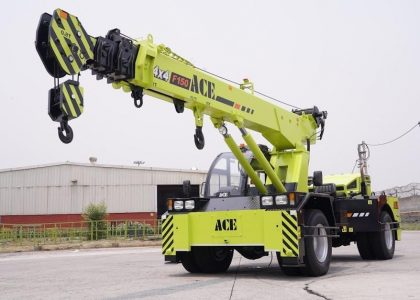The Massachusetts Stretch Energy Code is an optional appendix to the state’s building code, designed to promote energy efficiency beyond base requirements, offering municipalities flexibility in adoption.
1.1 What is the Massachusetts Stretch Energy Code?
The Massachusetts Stretch Energy Code is an optional appendix to the state’s building code, designed to promote higher energy efficiency in new constructions. Introduced in 2009 as Appendix 110.aa and updated to Appendix 115.aa, it provides municipalities with the flexibility to adopt stricter energy standards voluntarily. Based on the 2021 IECC with Massachusetts-specific amendments, the code sets advanced requirements for building envelope, HVAC systems, and renewable energy integration. It aims to support the state’s goal of achieving net-zero carbon emissions by 2050 by encouraging efficient practices and technologies. As part of the Massachusetts State Building Code, it is enforced through DOER regulations, ensuring compliance and effectiveness in reducing energy consumption and emissions. This code plays a crucial role in fostering sustainable development and reducing the environmental impact of new buildings across Massachusetts.
1.2 Importance of the Stretch Energy Code
The Massachusetts Stretch Energy Code plays a vital role in advancing energy efficiency and sustainability in the state. By setting higher standards than the base building code, it helps reduce greenhouse gas emissions and energy consumption, aligning with Massachusetts’ net-zero goals by 2050. The code incentivizes the adoption of modern, energy-efficient technologies and practices, leading to long-term cost savings for building owners and occupants. Its importance extends to promoting healthier living and working environments through improved insulation, ventilation, and reduced reliance on fossil fuels. Additionally, it supports economic growth by creating jobs in the construction and energy sectors, while fostering a competitive market for energy-efficient solutions. Overall, the Stretch Energy Code is a cornerstone of Massachusetts’ strategy to achieve a sustainable and resilient built environment.

Purpose and Adoption of the Stretch Energy Code
The Stretch Energy Code aims to exceed base energy codes, offering municipalities an optional framework to adopt stricter energy-efficient standards, aligning with Massachusetts’ climate goals.
2.1 Municipal Opt-In Program
The Massachusetts Stretch Energy Code includes a Municipal Opt-In Program, allowing cities and towns to voluntarily adopt stricter energy efficiency standards. This program provides local governments with the flexibility to go beyond base building codes, aligning with their sustainability goals. By opting in, municipalities can reduce energy consumption, lower emissions, and promote the use of renewable energy sources. The program has been instrumental in encouraging communities to adopt advanced building practices, supporting the state’s broader climate objectives. Since its introduction, the Municipal Opt-In Program has enabled many Massachusetts cities and towns to lead by example in energy efficiency, fostering a cleaner and more sustainable future.
2.2 Voluntary Adoption by Cities and Towns
Massachusetts cities and towns can voluntarily adopt the Stretch Energy Code, enabling them to set higher energy efficiency standards for new construction. This adoption is a key strategy for municipalities aiming to reduce greenhouse gas emissions and energy costs. The voluntary nature allows local governments to tailor their approach, balancing community needs with environmental goals. Many cities and towns have embraced this opportunity, leveraging the code to promote sustainable development and create healthier, more efficient buildings. By voluntarily adopting the Stretch Code, these communities demonstrate leadership in advancing energy efficiency and supporting the state’s climate action plans, setting a benchmark for others to follow.
Key Changes and Updates in the Stretch Energy Code
The Stretch Energy Code now aligns with the 2021 IECC, includes electrification incentives, and introduces stricter building envelope requirements, enhancing energy efficiency and reducing emissions significantly.
3.1 2021 IECC Amendments
The 2021 IECC amendments integrated into the Massachusetts Stretch Energy Code introduce stricter energy efficiency standards. Key updates include enhanced building envelope requirements, such as continuous insulation and improved window performance, to reduce heat loss and energy consumption. The amendments also emphasize electrification, encouraging the transition from fossil fuels to electric systems. These changes align with the state’s net-zero goals, targeting significant reductions in greenhouse gas emissions. Additionally, the updated code incorporates advanced HVAC efficiency standards and renewable energy integration, ensuring buildings operate more sustainably. These amendments reflect Massachusetts’ commitment to leading in energy efficiency and reducing environmental impact. They provide a framework for constructing high-performance buildings that meet modern environmental and energy demands.
3.2 Electrification Incentives
The Massachusetts Stretch Energy Code includes incentives to encourage the adoption of electrification in buildings, aligning with the state’s climate goals. These incentives aim to reduce reliance on fossil fuels by promoting electric systems, such as heat pumps, which offer greater energy efficiency. The code provides pathways for builders to transition to electric-only systems without increasing peak electric demand. Additionally, it supports the integration of renewable energy sources, such as solar panels, to power electric systems. These measures not only reduce greenhouse gas emissions but also lower operational costs for building owners. The incentives are part of a broader strategy to achieve net-zero emissions by 2050, making Massachusetts a leader in sustainable building practices.

Incentives for Builders and Developers
The Massachusetts Stretch Energy Code offers incentives to builders and developers, including cost savings and emission reductions, while promoting job creation and sustainable energy practices.
4.1 Financial Incentives
The Massachusetts Stretch Energy Code provides financial incentives to encourage builders and developers to adopt energy-efficient practices. These incentives include grants, rebates, and tax incentives for projects that meet or exceed the code’s requirements. For instance, developers who incorporate renewable energy systems or high-efficiency HVAC systems may qualify for significant financial benefits. Additionally, the code aligns with state and federal programs, offering opportunities for further funding. These incentives not only reduce upfront costs but also enhance long-term savings through energy efficiency. By leveraging these financial rewards, builders can offset initial investments while contributing to Massachusetts’ net-zero emissions goals.
4.2 Non-Financial Incentives
Beyond financial rewards, the Massachusetts Stretch Energy Code offers non-financial incentives to motivate compliance. These include streamlined permitting processes, priority plan reviews, and recognition programs for developers who meet the code’s standards. Builders gain access to exclusive training and technical support, ensuring they stay updated on best practices. Additionally, compliance with the Stretch Code enhances a project’s marketability, as energy-efficient buildings attract environmentally conscious buyers and renters. Municipalities that adopt the code may also offer incentives like density bonuses or reduced parking requirements, further encouraging participation. These non-financial benefits create a competitive advantage for developers while supporting Massachusetts’ broader sustainability goals.

Impact on Emissions and Energy Costs
The Massachusetts Stretch Energy Code significantly reduces greenhouse gas emissions and lowers energy costs by promoting efficient buildings and renewable energy integration, aligning with the state’s sustainability goals.
5.1 Emission Reduction Goals
The Massachusetts Stretch Energy Code plays a pivotal role in achieving the state’s emission reduction targets. By promoting highly efficient buildings and electrification, it aligns with Massachusetts’ goal of net-zero carbon emissions by 2050. The code sets ambitious standards to reduce greenhouse gas emissions from new construction, focusing on energy efficiency and renewable energy integration. Studies indicate that adopting the Stretch Code can cut emissions significantly, contributing to the state’s broader climate goals. These measures not only address environmental impact but also support long-term sustainability and public health by reducing reliance on fossil fuels. The code’s emphasis on performance-based standards ensures measurable progress toward emission reduction objectives.
5.2 Cost Savings for Developers
The Massachusetts Stretch Energy Code offers significant cost savings for developers through incentives and efficient design. By adopting energy-efficient practices, developers can reduce long-term operational costs. Financial incentives, such as grants and tax credits, are available to offset initial investments in high-performance buildings. The code’s focus on electrification and renewable energy integration also lowers utility expenses over time. Additionally, the code’s streamlined compliance process reduces administrative burdens, saving developers both time and money. Studies show that buildings constructed under the Stretch Code often see a return on investment through energy savings and increased property value. These cost-saving measures make the Stretch Code a financially attractive option for developers while promoting sustainability.
Training and Compliance
The Massachusetts Stretch Energy Code provides training programs for builders and developers, ensuring compliance through updated energy efficiency standards and streamlined processes.
6.1 Training Programs
The Massachusetts Stretch Energy Code offers comprehensive training programs to help builders, developers, and municipal officials understand and implement the code effectively. These programs cover key aspects such as building envelope requirements, HVAC system efficiency, and renewable energy integration. Training sessions are designed to address specific needs, including Zone 6 residential requirements, ensuring participants are well-prepared to meet updated energy efficiency standards. Additionally, the programs emphasize the importance of electrification incentives and provide practical guidance on compliance. Workshops and online resources are available to support continuous learning and adaptation to the evolving energy code. These initiatives aim to foster a skilled workforce capable of delivering high-performance, energy-efficient buildings across Massachusetts.
6.2 Compliance Process
The compliance process for the Massachusetts Stretch Energy Code involves submitting detailed plans and undergoing inspections to ensure adherence to energy efficiency standards. Builders must provide documentation, including energy modeling and commissioning reports, to demonstrate compliance. Local building departments review submissions and conduct on-site inspections to verify that construction meets the code’s requirements. Additionally, third-party reviews may be required for complex projects. The Department of Energy Resources (DOER) oversees enforcement, ensuring municipalities and developers adhere to the code’s provisions. Compliance is crucial for obtaining necessary permits and certifications, and non-compliance can result in delays or penalties. The process is designed to balance rigorous energy standards with practical implementation, supporting the state’s climate goals while maintaining construction quality and safety.

Technical Requirements
The Massachusetts Stretch Energy Code outlines enhanced building standards, including improved insulation, HVAC efficiency, and renewable energy integration, to reduce energy consumption and emissions.
7.1 Building Envelope Requirements
The Massachusetts Stretch Energy Code establishes stringent building envelope requirements to minimize heat loss and optimize energy efficiency. These include enhanced insulation standards, with specific R-values for walls, floors, and ceilings, ensuring thermal performance. Air sealing measures are mandated to prevent infiltration and exfiltration, reducing heating and cooling losses. Window and door standards emphasize low U-factors and proper installation to maintain envelope integrity. Additionally, the code requires continuous insulation in exterior walls, minimizing thermal bridging. These measures collectively reduce energy consumption, lower emissions, and enhance building durability. Compliance with these requirements is critical for achieving the code’s energy efficiency goals and supporting Massachusetts’ broader climate objectives.
7.2 HVAC System Efficiency
The Massachusetts Stretch Energy Code emphasizes enhanced HVAC system efficiency to reduce energy consumption and emissions. It mandates high-efficiency equipment, such as heat pumps and furnaces with higher AFUE ratings, to minimize energy use. The code encourages electrification of HVAC systems, aligning with state decarbonization goals. Additionally, it requires advanced controls and smart technologies to optimize system performance. Regular maintenance and inspection protocols are also outlined to ensure sustained efficiency. These provisions aim to lower operational costs and emissions while promoting cleaner energy solutions. By focusing on HVAC efficiency, the code supports Massachusetts’ broader objectives of achieving net-zero emissions and creating sustainable buildings.
7.3 Renewable Energy Integration
The Massachusetts Stretch Energy Code strongly emphasizes the integration of renewable energy systems to reduce reliance on fossil fuels. It encourages the use of solar, wind, and other renewable sources to meet energy demands. The code requires new buildings to incorporate on-site renewable energy generation, such as solar panels, to offset energy consumption. Additionally, it provides incentives for developers to install renewable energy systems, aligning with the state’s net-zero emissions goals. These provisions aim to reduce greenhouse gas emissions and promote sustainable energy practices. By integrating renewable energy, the code supports Massachusetts’ commitment to combating climate change and advancing clean energy solutions.

Benefits Beyond Energy Efficiency
The Massachusetts Stretch Energy Code promotes job creation and healthier buildings, contributing to economic growth and improved indoor air quality for occupants.
8.1 Job Creation in the Construction Sector
The Massachusetts Stretch Energy Code has led to significant job creation in the construction sector by driving demand for skilled labor in energy-efficient practices. As builders adopt higher efficiency standards, there is an increased need for professionals specializing in areas like HVAC system installation, insulation, and renewable energy integration. According to a study by the Institute for Market Transformation (IMT), the implementation of the Stretch Code has resulted in the creation of thousands of jobs across Massachusetts. These roles include not only construction workers but also engineers, architects, and contractors who design and implement energy-saving solutions. By fostering a more efficient and sustainable building environment, the Stretch Code supports economic growth while addressing climate goals. This job growth underscores the code’s broader impact beyond energy savings, benefiting local communities and the state’s economy. The focus on electrification and modern building techniques further amplifies these employment opportunities, ensuring long-term benefits for the construction industry.
8.2 Healthier and More Comfortable Buildings
The Massachusetts Stretch Energy Code promotes healthier and more comfortable buildings by enhancing indoor air quality, thermal comfort, and natural light. By requiring better insulation, advanced HVAC systems, and reduced air leakage, the code ensures consistent temperatures and humidity control, creating a more pleasant living and working environment. Additionally, the focus on electrification and renewable energy integration reduces reliance on fossil fuels, lowering indoor air pollution from combustion byproducts. These improvements contribute to occupant well-being, productivity, and long-term health. The code’s emphasis on energy efficiency also aligns with modern design principles that prioritize occupant comfort and sustainability, making buildings not only environmentally friendly but also more enjoyable to inhabit. This holistic approach benefits both residents and businesses, fostering healthier communities statewide.

Case Studies and Success Stories
Municipalities and developers share success stories of adopting the Stretch Energy Code, highlighting reduced emissions, cost savings, and innovative building practices across Massachusetts communities effectively.
9.1 Municipalities Leading the Way
Several Massachusetts municipalities have pioneered the adoption of the Stretch Energy Code, demonstrating its effectiveness in reducing emissions and energy costs. Cities like Boston and Cambridge have implemented the code to align with their climate goals, achieving significant reductions in greenhouse gas emissions. These communities have set benchmarks for energy-efficient construction, showcasing the code’s potential to drive statewide sustainability efforts. By opting into the Stretch Code, these municipalities have not only improved building performance but also promoted healthier living environments for residents. Their success stories highlight the code’s adaptability and its role in advancing Massachusetts’s broader net-zero objectives. These examples serve as inspiration for other towns and cities considering adoption, proving that the Stretch Code is a viable path to achieving energy efficiency and environmental targets.
9.2 Developer Success Stories
Developers across Massachusetts have achieved significant success by adopting the Stretch Energy Code, showcasing its practical benefits. Many have reported reduced energy consumption and lower operational costs, while also meeting state emissions targets. For instance, several residential and commercial projects in cities like Boston and Cambridge have exceeded energy efficiency standards, earning recognition and financial incentives. These successes demonstrate how the code aligns with business goals while supporting environmental objectives. Developers who embraced the Stretch Code early have gained a competitive edge, offering buildings with higher market value and improved occupant comfort. Their experiences highlight the code’s effectiveness in driving sustainable development and fostering innovation in the construction industry. These success stories serve as powerful examples for others considering adoption.

Future of the Stretch Energy Code
The Massachusetts Stretch Energy Code will continue to evolve, with updates from the Department of Energy Resources to align with state net-zero goals and integrate new technologies.
10.1 Upcoming Updates and Amendments
The Massachusetts Stretch Energy Code is expected to undergo significant updates to align with the state’s net-zero carbon goals by 2050. Future amendments will likely focus on electrification incentives, enhanced HVAC efficiency standards, and stricter building envelope requirements. The Department of Energy Resources (DOER) plans to integrate more renewable energy integration options and expand incentives for developers adopting advanced energy-efficient technologies. These updates aim to streamline compliance while promoting innovative construction practices. Public hearings and stakeholder feedback will play a crucial role in shaping these amendments, ensuring they reflect industry needs and environmental priorities. The updated code will also clarify enforcement mechanisms to ensure widespread adoption and consistency across municipalities.
10.2 Alignment with Net-Zero Goals
The Massachusetts Stretch Energy Code is closely aligned with the state’s ambitious net-zero carbon emissions goal by 2050. By promoting electrification, reducing reliance on fossil fuels, and enhancing energy efficiency, the code supports long-term environmental targets. Key updates include incentives for all-electric new construction and stricter building performance standards. These measures aim to minimize greenhouse gas emissions while ensuring cost-effective solutions for developers. The code’s focus on renewable energy integration and advanced building technologies further accelerates progress toward net-zero objectives. DOER’s regulatory framework ensures these standards evolve to meet future environmental needs, positioning Massachusetts as a leader in sustainable building practices and climate action.

Regulatory Framework
The Massachusetts Stretch Energy Code is regulated by the Department of Energy Resources (DOER), ensuring compliance with state energy efficiency and emissions reduction goals through enforceable standards.
11.1 DOER Regulations
The Massachusetts Department of Energy Resources (DOER) oversees the implementation of the Stretch Energy Code, ensuring it aligns with state energy efficiency and emissions reduction goals. DOER regulations incorporate the Stretch Code into the Massachusetts State Building Code, providing enforceable standards for municipalities that opt in. The updated Stretch Code, as part of DOER’s 225 CMR regulations, includes specific requirements for energy efficiency, electrification, and renewable energy integration. These regulations aim to reduce greenhouse gas emissions and promote sustainable building practices. DOER also provides compliance guidance and enforcement mechanisms to support municipalities in meeting these standards, ensuring consistency across the state. Grants and incentives are offered to encourage adoption and adherence to the code, further driving its success in achieving Massachusetts’ climate goals.
11.2 Enforcement Mechanisms
The Massachusetts Stretch Energy Code is enforced through a combination of compliance inspections and penalties for non-compliance. Local building departments are responsible for ensuring adherence to the code during construction and renovation projects. Inspections are conducted to verify that energy efficiency measures meet or exceed the standards outlined in the Stretch Code. Failure to comply can result in fines or delays in obtaining occupancy permits. The Massachusetts Department of Energy Resources (DOER) also plays a role in oversight, providing resources and guidelines to municipalities to support consistent enforcement.
Training programs for builders, architects, and code officials are offered to promote understanding and compliance. These programs emphasize the importance of adhering to the code to achieve energy efficiency goals.





